Hellblade 2 looks like the most visually ambitious Unreal Engine 5 game yet
A closer look at Ninja Theory's state-of-the-art graphics.
Senua's Saga: Hellblade 2 is shaping up to be one of the most visually exciting games of the year. Ninja Theory's cinematic sequel should be making excellent use of Epic's Unreal Engine 5, producing some truly stunning results. At the same time, a lot of early footage for the game has been brief, hard-to-follow, and ridden with compression artefacts - until now. Microsoft released high quality b-roll meaning that we can finally draw some clearer conclusions on the game's visual make-up. So, how do these early shots pan out? Is this the Unreal Engine showcase we've been waiting for?
In terms of visual features, Hellblade 2 is clearly pushing some really impressive tech. Senua's Metahuman-derived facial rendering is the extreme strong point here, up there with the absolute best in video games. Everything - from the subtly translucent skin shading, to the lifelike eyes, to the pitch-perfect teeth - all looks fantastic. The animation is unbelievably good, superbly translating motion-captured performances into a plausible digital character. The game also indulges in a lot of post-processing niceties, including a beautiful depth of field, which smoothly transitions between focal points and doesn't exhibit any kind of haloing artifacts. There is some aliasing around Senua's hair, but it's otherwise virtually flawless. Motion blur is similarly strong, without obtrusive sampling artifacts even when we zoom in on still frames.
Elsewhere, there's the typical mix of Unreal Engine 5 features, albeit deployed very effectively. If you look across the ground in much of the preview footage, there's dense Nanite-driven pebbles, the kind of fine geometry that is largely absent from games with traditionally rendered polygonal meshes. Ultra-dense meshes were what impressed most in the game's 2019 debut trailer, and that has been carried over for this showing, with very pleasing density. Nanite and Virtual Shadow Maps are two bits of graphics tech that work well together, and Epic's proprietary shadowing solution is here too. Again, this stands out most on the pebbles and fine rock detail, where there are perfect, pin-sharp shadows, even at extreme angles on the smallest geometric elements. This is a combo that's very hard to fully achieve with more traditional rendering and is a staple of other UE5 efforts like RoboCop: Rogue City.
The game's indirect lighting characteristics are tougher to discern as a lot of the trailer takes place in near absolute darkness, but when we can make out indirect lighting detail, there's a good gradient in the shadows, which would be characteristic of Lumen. Throughout the presentation seen so far, there's really no standout visual issues with the indirect lighting, which again would suggest a good use of Lumen. All of this is in line with prior video assets from Ninja Theory.
Reflections are also tough to judge. It's possible there's some screen-space effect, but on a large body of water seen in the b-roll, there are no SSR occlusion issues at all. Earlier trailers did exhibit some SSR issues, and one appeared to prominently make use of a planar reflection. So at the moment, I think the results are a little ambiguous, suggesting a mix of techniques are likely in play here. For reference, screen-space reflections can only be calculated from information that is indeed on-screen - so panning the camera up and down in front of a body of water, for example, can show reflections literally appearing and disappearing. It's not a good look and can be overcome via several techniques, notably with ray tracing or using planar reflections.
Moving on, animation is another strong point in Hellblade 2. Fight sequences are composed of motion-captured attacks, dodges, and finishing moves, with Senua tackling foes in one-on-one combat. There's a sense that this is probably a less flexible combat experience than a lot of other games - more like the first game, in other words, than something like God of War - but each slice of combat movement feels tightly choreographed as a result. To make the impact of blows hit harder, the developers have chosen to pause the animation for a couple extra frames when an attack connects.
Relative to 2017's Hellblade: Senua's Sacrifice, this is shaping up to be a profoundly improved sequel, and a game that is generationally advanced beyond its predecessor. Senua's Sacrifice was a good looking title. Looking back, only some occasional lower-fidelity assets really date it, but it's clearly a game that was built around last-generation constraints and technology. Hellblade 2 is just on another level in almost every respect in terms of core technology, and Ninja Theory has a lot to be proud of here. Compared to earlier showings, I think this footage is on par with recent trailers of the game, and is possibly even a touch ahead of Hellblade 2's first gameplay trailer, which isn't quite up to the same level in terms of character rendering. The initial 2019 trailer, with its almost unbelievable fidelity, is a bar this footage probably doesn't quite clear, though I'd really want to see a more varied slice of the game - and some actual hands-on time - before making any final conclusions.
Image quality has been a question mark throughout development as the cinematic nature of the visuals reduces the aliasing artefacts on which pixel counts are made - and then there's the fact that the footage rarely presents cleanly viewed through the lens of YouTube's encoding. In the high quality preview footage we have, the game remains quite soft, especially in motion, though a lot of this seems to stem from very aggressive post-processing. The usual suspects show up here: motion blur, depth of field, chromatic aberration, and film grain, which do end up blurring the image somewhat. Hellblade 2 is unique here in that these effects seem unusually high-quality and unusually pervasive. The film grain in particular seems quite harsh, so hopefully the game ships with an option to disable it.
I think a little bit of softness - especially in cinematics - is perfectly fine, and the game does have a filmic look at times as a result. However, there's also some image breakup in motion, which is most noticeable in the action sequences from the preview. Hellblade has a blurred, slightly artifact-prone quality in fast motion, which holds especially true when Senua activates an ability to slow down time, which appears to turn off the motion blur that otherwise helps to hide some of these artifacts. The preview encode is fortunately high enough quality that we can make out individual pixel edges in a few moments, with results coming in between 1296p and 1440p or thereabouts, though with the letterboxing effect, it's more like 2304x964 to 2560x1070. However, transparencies operated on a further reduced resolution, so geometry occluded by these effects is also of a lower pixel count. This is a time-honoured way to save GPU performance we've seen across multiple generations now.
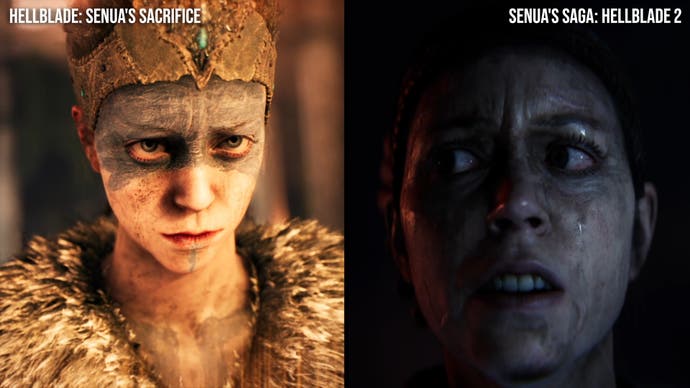
Beyond that, another image quality concern revolves around the resolution of the volumetric effects. The low-lying fog seen in the footage has artefacting issues and suffers from visibly low-res rendering. These effects look good I think, but they don't hold up as well with close scrutiny. Again, reducing resolution of volumetric effects is not specific to Hellblade 2 - many games do it.
Performance of the captured footage appears to be generally fine based on the asset we have. Ninja Theory has delivered 30.0Hz video for the asset, which isn't a great idea - we would recommend all developers capture, edit and export at the same 59.94Hz output as the console to avoid stuttering from mismatched timebases. There are one-off hitches throughout the footage that might be the game or might be the handling of the capture. Even so, the good news is that the footage reveals no sustained performance drops - a positive sign for the experience to come, but we can't help but wonder whether a 40fps/120Hz mode may have been possible.
Judging by the footage, the only real concession in Hellblade 2 comes down to the size and scope of the game. Hellblade 2 is a smaller title than a lot of its contemporaries, with a structure that looks similar to the first game. Early trailers suggested something a bit broader might be on the cards, but more recent showings - including the latest preview footage - seem to show a game that is more tightly constrained, built around narrow passageways, linear paths, and one-on-one duels. Judging from the previews from other outlets, the final game may largely stick to this pattern, which would show some restraint relative to other popular single-player action titles.
Of course, some players may also issue with the way the game has seemingly been configured on console platforms. This is a 30fps game, with no high frame-rate options, which may irk some gamers but is reasonable for a game with this level of visual accomplishment. The game's image quality, at least judging from this preview, is a little mixed, though I think expectations should probably be adjusted given the quality and character of the graphics on display. This is a narrative-focused, cinematic title - perhaps similar to The Order 1886 - and it isn't aiming for a super-sharp, super-clear image.
On Xbox Series X, it's clearly a demanding game, but the results still look excellent overall. It's the lower-power platforms - specifically the Series S - that I'm more curious about. Resolution is bound to take a hit and I'd be curious to see the extent to which there are any further S-specific nips and tucks. The game's configuration on Series X may also place this as one of the more demanding pieces of PC software we've seen so far this generation. It might take a pretty solid GPU to manage good image quality at high frame-rates - presuming the CPU side of the equation is scalable enough. It's a lot like other high-end UE5 efforts we've seen so far in that respect.
Hellblade 2 is bound to create some divides as a result of these compromises - but I have to say that I have a lot of respect for Ninja Theory's creative talents, and the immense visual accomplishment this title represents. In my book, this could be the very best-looking Unreal Engine 5 title out there when it releases on May 21st, which is no small feat.
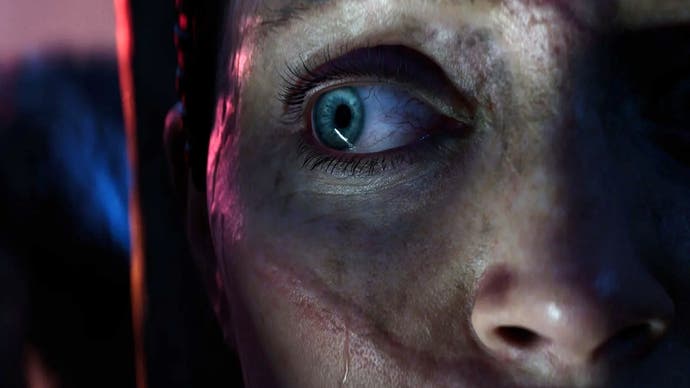




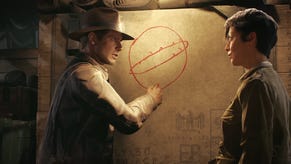
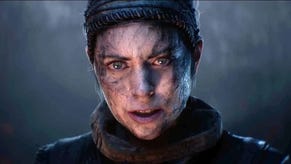
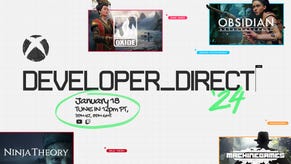

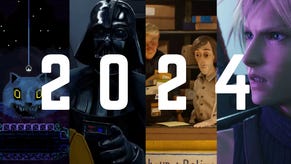


.png?width=291&height=164&fit=crop&quality=80&format=jpg&auto=webp)






